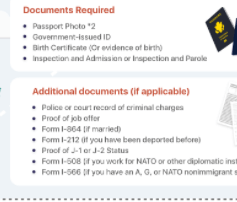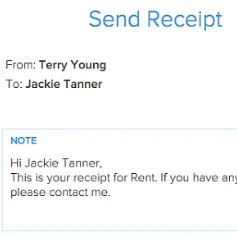If you’re planning on immigrating to the United States, and are waiting for your family based immigration processing times, then it’s time to get an overview of what’s going on. The immigration process can be long and tedious. It’s a lot to take in, it’s confusing, and sometimes it seems like there is no end in sight.
But the good news is that We’re here with you every step of the way. It’s important to know what you’ll need before taking steps in the U.S. immigration process, so you don’t end up disappointed when your application is denied. So, let’s dig out everything you need to know in this regard.
What is a Family-Based Immigrant Visa?
A family-based immigrant visa is a type of immigration that allows people to enter the United States through their close relatives. There are many types of visas, but a family-based one is typically based on two things: blood and marriage. What Is a Family-Based Immigrant Visa?
The first type, being related by blood, can be a parent or sibling already living in the U.S. The second type, being related by marriage, can be spouses or children who have not yet reached 18 years old. This category also includes parents. However, there are many different types of these visas, which can make it difficult to know what type you should be applying for. To learn more about this topic, read on.
What Is a Family Based Immigrant Visa?
The process of immigration is a lengthy and complicated one. There are many steps to go through before arriving in the United States. It can take anywhere from a few months to years. The time it takes depends on the type of family based green card, which country the immigrant is coming from, and whether or not they have any criminal history.
Family-Based Immigration Process Steps:
A family-based immigration visa is a type of visa that allows an immigrant to come to the United States and live with their spouse or parent. The United States Immigration and Nationality Act (INA) provides several family-based immigration visas. These are available to U.S. citizens, lawful permanent residents, refugees, asylees, and others who have been granted the authorized stay in the U.S.
To find out who can receive a family-based immigration visa, you must first be eligible to immigrate. This means that you must have a qualifying relative or qualify as an immediate relative of a U.S. citizen and meet the other requirements for immigrant visas.
If you are not eligible to immigrate, then your spouse would need to come here on their own individual basis, which is called adjustment of status. There are also many ways for individuals outside the United States to apply.
The Employment-Based Immigration Process:
The employment-based immigration process begins with applying online or through an approved employer. Once your application is complete, it will be sent to the USCIS for review. The USCIS will then send you a notice indicating whether or not your application has been accepted for processing. If your application is accepted for processing, you will receive a notification from the USCIS specifying the date by which you must appear at a local office to begin the visa interview process.
The Family-Based Immigration Process:
The family based immigration process begins with submitting an application online or through an approved sponsor. Once your application is complete, it will be sent to the U.S. Citizenship and Immigration Services (USCIS) for review. The USCIS will then send you a notice indicating whether or not your application has been accepted for processing. If your application is accepted for processing, you will receive a notification from the USCIS specifying the date by which you must appear at a local office to begin the visa interview process.
Family Based Immigration Processing Times:
The family based immigration processing times are taking longer than the employment-based immigration processing times. This is due to the current backlog of applications that are waiting to be processed. There are mainly two types of immigration process which are being used widely.
Family-Based Green Cards Categories:
The United States immigration system is a complex and multi-layered system that has developed over time. The Immigration Act of 1990, also known as the Simpson-Mazzoli Act, was signed by President George H.W. Bush to reform the immigration laws in order to accommodate those who wished to enter or remain in the country legally. The first step for family members seeking green cards is to find out if they are eligible under one of five categories.
There are two main categories of family-based green cards, Unmarried Sons and Daughters of U.S. Citizens (USC) and Married Sons and Daughters of U.S. Citizens (MSDC). The USC category is for unmarried sons or daughters who have no children or married sons or daughters with one child each. In the MSDC category, the applicant must have a spouse, minor children, unmarried children under age 21 (or dependent elderly parents). Or adult dependent relatives other than spouse and minor children who are in the United States at the time of filing an application. This is for adjustment of status to permanent residence in order to qualify for this category.
These categories apply only to applicants who are citizens of countries that do not allow naturalization on the basis of marriage to a U.S. citizen: The first option will be more suitable if you want your family members to get green cards through you rather than applying separately. As they can get their own visas through regular channels after a few years once they turn 21 years old. Only if they still need them because they don’t have any close relatives in the U.S.
Family Based Immigration Categories And Processing Times:
The USCIS handles all green card applications, visas, citizenship requests, and naturalization ceremonies. The process of obtaining a green card varies depending on whether one has an employer sponsoring them or if they are self-sponsoring their application.
If one has an employer sponsoring them, then they will need to have a job offer from that company before applying for a green card. The Immigration Act of 1990 established the two main categories for U.S. immigrants:
Immediate Relatives:
who are spouses of citizens, children (under 21 years old) of U.S. citizens, parents or grandparents of U.S. citizens, and siblings of U.S. citizens; For two key factors, this immigration form is preferred above other family-based green cards.
There is no yearly restriction on the frequency of visas that may be issued, so far as the candidate and sponsors are both qualified. A decision is made as soon as USCIS receives an I-130 petition. The green card will be accessible soon when it is authorized.
Processing Time:
This allows for a quick and efficient assessment of both forms. According to the support center responsible for your registration, this may take anything from six months to a full year.
Family Preference Immigrants:
unmarried sons/daughters (over 21) of U.S. citizens and their children, married sons/daughters (21 or older)of U.S. citizens. Visas are granted to those who have close ties to U.S. citizens and those who have close ties to Lawful Permanent Resident (LPR) spouses (LPR). Each financial year, the quantity of workers who fall into these groups is capped.
Note that such a granted family priority appeal does not guarantee that a green card will be granted once it has been authorized. Overseas relatives still have to seek a green card even if their application is accepted.
Per month, the Department Of state publishes a Visa Bulletin to inform the public of the visa numbers that are presently eligible for application. Immediate relative petitions are preferable to family preference applications since there is a long wait for a visa registration to become accessible for an intimate relationship.
| Subcategory | Processing time |
| Family First Preference (F1) | Between 6 to 12 months |
| Family Second Preference (F2) | 10 to 20 years, depending on the visa backlogs |
| Family Third Preference (F3) | Time can range from 1 year up to 10 years |
| Family Fourth Preference (F4) | Can range from 1 year to extremes of 10 years |
Here Are Some Common Things to Know Before You Apply for a Green Card:
I-130 Processing Times for Immediate Relatives:
When you submit your I-130 claim, the USCIS regional center that receives it will determine how quickly it will be processed. Normally, application durations for Form I-130 range from four to fifty months for members of a green card purchaser’s immediate family.
I-130 Processing Times for Family Preference:
A qualified relation who wants to legally settle in the United States may apply for a green card by filling out Form I-130 of the U.S. Citizenship and Immigration Services (USCIS). An entire family member’s petition may be approved in as little as five months and take as long as a year for certain priority classifications after submitting Form I-130, Appeal for Alien Relative. There may be some discrepancies between family-based green card quota and the actual number of family based green card timelines.
Sibling Green Card Processing Time:
Another family-based Green Card category is obtaining a Green Card for siblings. When it comes to obtaining resident status, siblings aren’t at the top of the list (Green Card). A sibling may be sponsored to accompany someone in the United States by researching this topic, which lays down the procedure in the most effective manner possible.
Siblings must be apart for a minimum of ten years before they may apply for Green Cards. The amount of time varies greatly depending on the nation of origin of the other sibling. A total of 65,000 Green Cards for siblings may be awarded each year. As an immediate relative of a U.S. citizen, siblings face the highest wait period.
Family Based Green Card Interview Questions:
All the applicants, even those with the best of credentials and achievements in life, sometimes face unusual questions or even senseless queries when undergoing a family based green card interview. These sometimes so-called trick questions are mostly prompted by the ones who are unaware of the consequences or not ready to face the consequences of their actions.
You, who are sure you are ready to face such situations, should know these family based green card interview questions so that you can foresee and avoid objections to overcome them. These I-485 interview questions for parents are crucial to answer properly.
The interviewer will ask the following questions to confirm that you are qualified for a family based green card:
1) What is your relationship to the U.S. Citizen petitioner?
2) How long have you been living with this person in the United States or abroad?
3) When did you enter into this relationship?
4) When did you last see each other, and how often do you communicate with one another by phone, email, or mail?
Criteria for Adjustment:
Derivatives are financial instruments that derive their value from the performance of an underlying asset. Derivatives are normally used as a way to hedge or manage risk. According to the “Adjustment of Filing Fees for Derivative Applications” made by CCAF, if you are filing an application under the Derivatives Exchange Act or the Foreign Exchange Administration Act (or any other foreign law requiring that a filing fee be paid). If you have paid your filing fees in full, then your adjustment is automatically approved.
If you believe that your application was incorrectly rejected, you may file an appeal within 30 days from the date of rejection. If it’s more than 30 days after the date of rejection, you must submit a new application.
I-130 Processing Time for Brother and Sister 2022:
A person who is a citizen of the United States can file an I-130 petition for their brother or sister, spouse, parent, or child as long as they are 21 years old and not currently in immigration proceedings. I-130 processing durations for brother and sister or close family relatives of U.S. citizens now range from 4 to 37 months.
Family-Based Green Card Processing Time for Parents:
The processing time for an I-130 petition is the amount of time it takes to process a family-based visa. The U.S Department of State estimates that this will take approximately 12 months from the date of filing and approval but can vary depending on workload and other factors.
Family-Based Immigration News:
The process of immigration is a long and difficult one. It can be broken down into two categories: Family-based immigration, which includes sponsoring an immigrant for citizenship or permanent residency through marriage, birth, adoption, or the reunification of a family member; And employment-based immigration, which covers jobs in fields that have shortages of qualified American workers.
Family-Based Green Card Processing Time for Spouse:
The process of obtaining a green card for your spouse is called family-based immigration. The time it takes to complete this process varies depending on the type of visa you would like to obtain and how quickly the U.S. Citizenship and Immigration Services (USCIS) processes cases in that category.
Final Thoughts:
The family based immigration processing times have been increased to an outrageous amount of time. It is taking so long for people who are trying to reunite their families, and it’s heartbreaking. The Trump administration has created a tremendous amount of chaos for immigrants in the United States by making these changes, and it needs to stop. I have to say. I’m not too sure what’s going on with this whole immigration thing.
It seems like it’s getting worse and worse every day. But then again, who knows? Maybe things will get better soon. I hope this blog helped you understand the process of family based immigration in the United States. Can I Expedite the Process?
Frequently Asked Questions
Do Immigration Policies Change
Ans: In the United States, there is a big debate about whether or not we should have any immigration policy at all. So, we can’t tell you exactly what will happen.
Should I Hire an Attorney for Help with Family Visas?
Ans: Whether or not to hire an attorney will depend on the specific situation.
How long does it take for a green card holder to petition a child over 2?
Ans: Those under the age of 21 who are single and not married may wait around a year and a half, perhaps a little longer, due to the lengthy wait.



